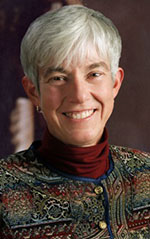An Ambassador Returns to China
Reflections
BY BEA CAMP
“I have the ambassador in the vault,” announced our consulate communicator; the ashes of John Leighton Stuart had arrived in Shanghai.
Soon after settling in as consul general in Shanghai in the fall of 2008, I had received an email from Under Secretary for Management Pat Kennedy informing me that Ambassador Stuart’s ashes were being shipped in the classified pouch from Washington.
The name of John Leighton Stuart, U.S. ambassador in Nanjing from 1946 to 1949, still resonates in China, where a famous essay by Mao Zedong proclaimed “Farewell, Leighton Stuart!” Celebrating Stuart’s departure after the Communists took control of mainland China, Mao called the ambassador “a symbol of the complete defeat of the U.S. policy of aggression.”
Thirty years would pass before we established relations with the People’s Republic of China and appointed another U.S. ambassador to serve there.
Born in China, the son of missionaries and the founder of Yenching University, Amb. Stuart had asked that his remains be buried in China alongside his wife’s grave at Yenching, now the site of Beijing University.
When he died in 1962, Amb. Stuart was living with his long-time assistant Philip Fugh, who took on the obligation of fulfilling Stuart’s wish to be interred in China. Philip had twice traveled to China, in 1973 and 1984, seeking permission for burial at Beijing University. After Philip’s death, the jar of ashes passed to his son, John Fugh, along with the solemn obligation to return them to China.
For many years of diplomatic distrust between China and the United States., returning the ashes of the late ambassador proved impossible. As The New York Times reported, “Mr. Stuart’s own history is a window into the shifting sands of United States–China relations from the later years of the Qing dynasty to the rise of communism.”
But John Fugh, the first U.S. general of Asian descent, finally achieved a breakthrough after a meeting with Politburo member (and later president of China) Xi Jinping, who had been party boss in Zhejiang Province from 2002 to 2007.
While a Beijing burial was out of the question—and Mrs. Stuart’s grave had long since been obliterated—General Fugh obtained permission to inter the ashes in Hangzhou, capital of Zhejiang Province and Stuart’s birthplace.
I learned most of this in the van taking me, my husband, Gen. Fugh and his wife, June Fugh, to Hangzhou, along with the box containing Amb. Stuart’s ashes. On the way we also found out that the very companionable June Fugh, who seemed uncannily familiar, was the sister of longtime broadcaster Connie Chung, with her own fascinating family tale.
Ambassador Sandy Randt flew from Beijing to Hangzhou for the interment, which took place at a new official cemetery outside the city. Nearby, we were surprised to notice, stood the grave of the Chinese fighter pilot, Lt. Cdr. Wang Wei, who died after colliding with an American EP-3 in 2001.
The American crew members had been forced to make an emergency landing on Hainan; Wang Wei’s body was never found. We speculated whether the Chinese decision to place Amb. Stuart near a military officer honored as “Guardian of Territorial Airspace and Waters” was a poke in the eye, or another symbol of reconciliation.
At Stuart’s gravesite we were startled to hear from somewhere behind us the strains of “Amazing Grace,” followed by the “Star Spangled Banner.” A group of elderly Yenching grads revealed after the ceremony that they had hidden a tape recorder in the bushes, correctly surmising that the Hangzhou waiban (Foreign Affairs Office) would not provide any musical accompaniment.
I never figured out how the old alums learned of the ceremony, but their devotion to the man who founded their university 100 years earlier was a wonderful symbol of an enduring people-to-people relationship, unbroken despite years of war, isolation and diplomatic antagonism.





